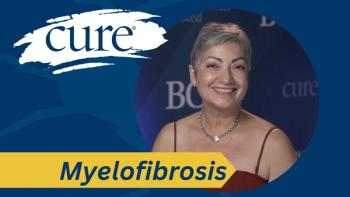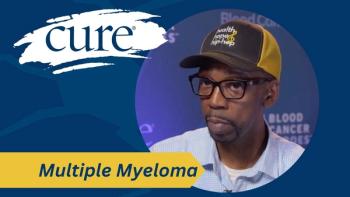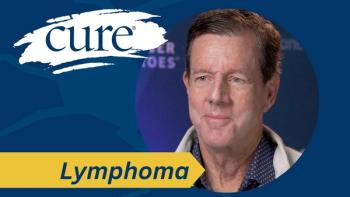
Examining the Role of Liquid Biopsies in Lung Cancer Care
The best use of liquid biopsies in late-stage non–small cell lung cancer (NSCLC) will be to augment tissue biopsies at initial diagnosis and to evaluate patients for second- and third-line therapies.
The best use of so-called “liquid biopsies” — assays that characterize molecular abnormalities from plasma — in late-stage non—small cell lung cancer (NSCLC) will be to augment tissue biopsies at initial diagnosis and to evaluate patients for second- and third-line therapies, according to Philip C. Mack. And, although liquid biopsies are not expected to supplant tissue-based testing for diagnosis and first-line analysis, the growing list of actionable targets in NSCLC make it imperative that molecular testing cover a broad range of genes no matter what technology is used, Mack noted.
Mack, the director of Molecular Pharmacology at the UC Davis Comprehensive Cancer Center, discussed liquid biopsies in the context of NSCLC genomics in an interview with CURE in advance of his presentation about developments in the field during the 2016 International Lung Cancer Congress.
There are several roles that liquid biopsies, defined as tests that detect the presence of somatic mutations or alterations in circulating tumor DNA (ctDNA), can fulfill in managing patients with advanced or metastatic NSCLC, Mack noted.
At initial diagnosis, there might not be enough tissue left after the pathological examination to conduct the more extensive molecular testing that would help inform therapy selection, he said. Then, as patients progress or develop resistance to a first-line targeted therapy, liquid biopsies provide a noninvasive means of detecting mutations that can be attacked with drugs in later lines of therapy.
“I don’t think that a liquid biopsy will replace an initial diagnostic biopsy. You still need that actual specimen for a pathologist to review,” said Mack. “However, it can provide a wealth of information that can complement and expand the information that we have on those tumors from the get-go, particularly in terms of mutations that are potentially actionable, and may indicate appropriate assignment to a targeted therapy.
“One of the major advantages of liquid biopsies is their ability to detect emergent resistance mutations when patients begin to progress on an otherwise effective therapy,” Mack noted. “And you can do this without having to form a secondary biopsy, which is, of course, an arduous procedure with myriad safety risks that often yields uninformative results.”
Mack, however, has several caveats about the promising new technology. Importantly, a positive mutational finding on a liquid biopsy should be used to recommend a targeted therapy, but a negative finding should not exempt a patient from receiving a matching drug, Mack said.
“My cardinal rule for liquid biopsies — assuming you’re using a validated assay and a certified laboratory — is that a positive result is actionable, but a negative result should be considered neither positive nor negative. It is uninterpretable for the factor of interest,” Mack said.
“In many cases, the tumor just may not be shedding enough DNA for detection,” he continued. “The tumor might be positive for your factor of interest, for example, the EGFR T790M resistance mutation. But that tumor that is growing is not yet shedding enough DNA in circulation for it to be detected. So it can be tumor-positive, but plasma-negative.”
Mack said some lung cancer specialists are now recommending that when the need for a second biopsy arises, clinicians start with a liquid biopsy. “If you get information from that liquid biopsy, then you can proceed with your treatment course,” he said. “If you do not get any information, you make no assumptions about it, and you proceed with a second biopsy.”
The ability to evaluate driver mutations in NSCLC will become increasingly important as the number of actionable mutations increases, researchers have noted. There are approximately 12 molecular markers now that “could be very informative,” Mack said.
The National Comprehensive Cancer Network recommends broad molecular profiling for patients with metastatic NSCLC. Although currently approved therapies are aimed at EGFR mutations and ALK rearrangements, emerging new targets include BRAF V600E mutations, MET amplification or MET exon 14 skipping mutations, RET and ROS1 rearrangements, and HER2 mutations, according to the guidelines.
Evidence Builds for Assays
“It’s really essential in the modern era to be doing a comprehensive biomarker assessment in lung adenocarcinoma,” Mack said. “Whether it’s by tissue or plasma, the physicians owe it to their patients to perform these tests.”The liquid biopsy field has drawn intense interest from biopharmaceutical companies in recent years, and new developments are unfolding rapidly.
In June, the FDA approved the first blood-based genetic test for clinical decision making, the cobas EGFR Mutation Test v2. The assay is indicated for the detection of EGFR exon 19 deletions or exon 21 (L858R) substitution mutations as a companion diagnostic for first-line Tarceva (erlotinib) therapy. The test is approved for use with plasma or tumor tissue, according to Roche, which developed the assay.
Mack said ctDNA is most available in aggressive malignancies. “Fragments of shed DNA in the bloodstream are stable enough to collect and interrogate as long as you’re using a highly sensitive assay,” he said. “Here you have to be cautious because with highly sensitive assays comes an increased risk of false-positives.
“The best assays that are available, and there are several commercially available, are ones that have gone through rigorous validations to make sure that they are as close to 100 percent specificity as possible,” Mack added. “In other words, that they simply do not present false data.”
At the 2016 American Society of Clinical Oncology (ASCO) Annual Meeting, Mack and colleagues presented findings from a genomic analysis of ctDNA in blood samples from more than 15,000 patients representing multiple cancer types; approximately 37 percent of participants had lung cancer. Researchers said it was the largest-ever liquid biopsy study.
The Guardant360 next-generation sequencing (NGS) test, which analyzes 70 cancer-associated genes through digital polymerase chain reaction (PCR) sequencing, was used to detect somatic mutations. Most of the results were compared with data from The Cancer Genome Atlas (TCGA) and some were correlated with results of genetic testing on tumor tissue.
“The major finding of the study was that ctDNA mutation patterns were highly concordant with tissue analysis as reported by the TCGA and plasma analysis as reported in this study,” Mack said during an ASCO press briefing.
Overall, the positive predictive value for ctDNA sequencing ranged from 94 percent to 100 percent across six key biomarkers. For patients with NSCLC, the plasma testing detected the presence of truncal mutations in about 85 percent of cases, Mack said.
Notably, ctDNA testing for the EGFR T790M resistance mutation did not correlate with the TCGA, probably because patients in the tissue-based population had not yet received the anti-EGFR inhibitor therapy that promotes the mutation, researchers indicated.
The study also demonstrated that NGS testing identified more biomarkers than did tissue testing. In a subset of 362 nonsquamous NSCLC cases, 63 percent had insufficient tissue for full genotyping. When ctDNA testing was added, an additional 51 cases with actionable biomarkers were detected for an increase in biomarker yield of 42 percent.
In another study, researchers from the Dana-Farber Cancer Institute tested ctDNA using droplet digital PCR for plasma samples from 180 patients with advanced NSCLC to determine whether the technique could be used for rapid genotyping.
They found the technology had a positive predictive value of 100 percent for EGFR exon 19 deletions, L858R mutations, and KRAS mutations. The predictive value dipped to 79 percent for T790M mutations. Overall sensitivity ranged from 64 percent to 82 percent, depending on the mutation. In addition, the turnaround time was two to three business days, as opposed to the 27 days typically needed for a patient obtaining a new tumor biopsy, the researchers said.




